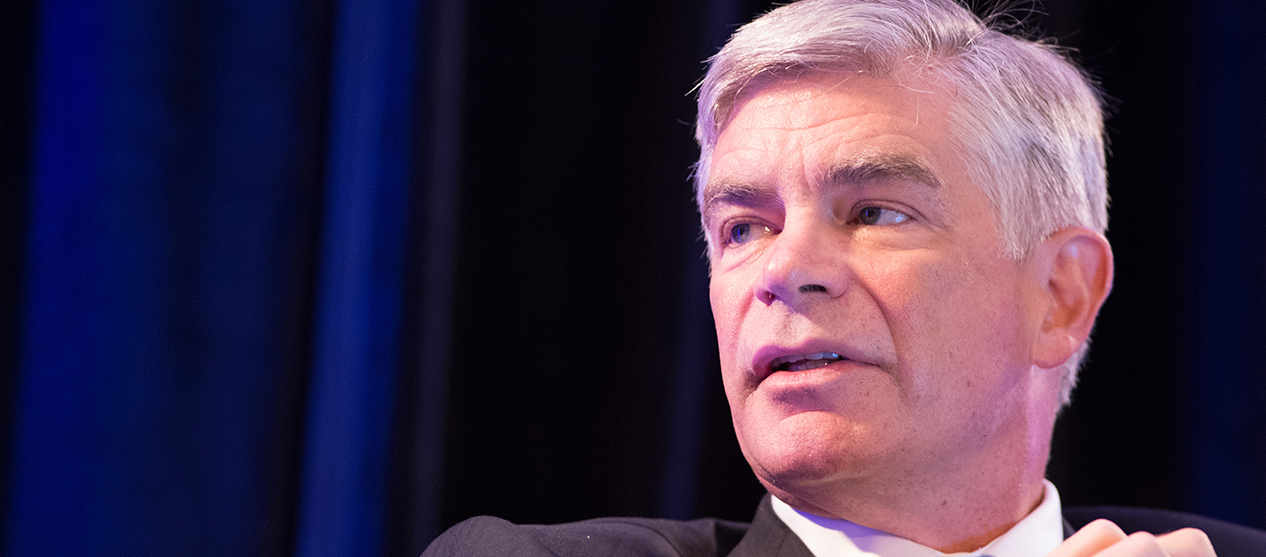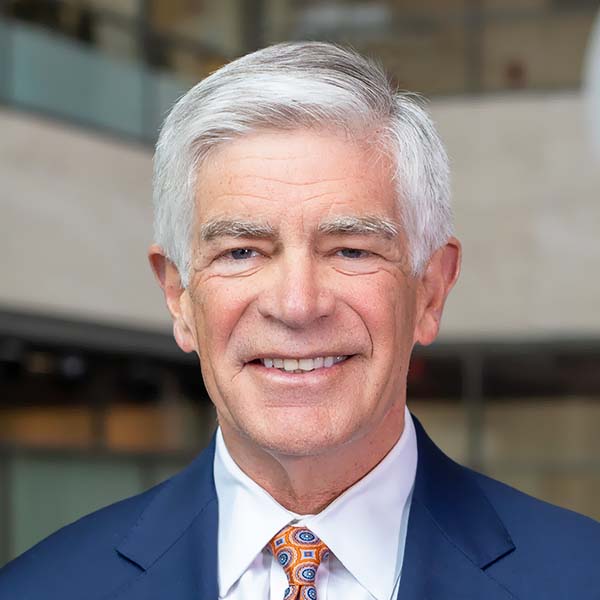Good morning and thanks so much for that introduction, Andrea. It’s great to be back among friends and fellow chamber members … at least in some form.
We may be meeting in unusual circumstances today, but I still need to give you the usual Fed disclaimer: The views I express today are my own and do not necessarily reflect those of anyone else on the Federal Open Market Committee or in the Federal Reserve System.
The New Abnormal
It’s now been more than three months since the onset of the COVID-19 crisis and the beginning of what I don’t want to call the “new normal.” None of this — including the fact that we are meeting today virtually — is normal.
Over that period, we went from enjoying strong economic growth, stable prices, and near-record low unemployment to a sharp contraction of economic activity and tens of millions of job losses. Here in the region that the chamber covers, the unemployment rate shot from 5 percent to more than 15 percent. Meanwhile, more than 115,000 of our fellow citizens across the country have lost their lives to COVID-19 — and the number continues to rise each day.
It has been a heartbreaking period.
Gus Faucher will give you a more granular look at the local economy in a moment, but on the national level, I can tell you I expect 2020 to show a sharp recession; 2021 will be a growth year, with GDP and employment picking up, though not enough to return the economy to where it was at the beginning of this year. All of this, of course, is quite uncertain, depending in a large part on how the virus continues to move through our society.
Fed Actions
The Federal Reserve’s role in mitigating this crisis has been to use our lending powers to maintain our underlying economic infrastructure by making sure that every sector of the economy has access to liquidity. Our lending facilities are meant as backstops to the private sector. We don’t want to disintermediate the private sector — we simply want to be there to support market functioning.
So, what have we done?
First and foremost, we have lowered our policy interest rate to near zero, a stance we decided to keep unchanged at last week’s FOMC meeting. We intend to keep the rate near zero for the foreseeable future, possibly through 2022.
In order to keep credit flowing, beginning in March, we began buying large amounts of Treasury bonds and mortgage-backed securities. We have now purchased more than $2 trillion of these products. The markets have largely stabilized, and we’ve slowed the rate of purchases. But we’re not stopping. We intend to keep buying about $120 billion worth of Treasury bonds and MBS each month.
We’ve also rolled out a program to help cash-strapped local governments. The Municipal Liquidity Facility, whereby we buy bonds from municipalities and states whose tax revenues have collapsed, is designed to provide essential liquidity as they navigate the twin crises of the pandemic and the economic downturn. Earlier this month, we had our first taker, with the State of Illinois tapping the program for $1.2 billion.
We’ve also been working hard on launching our Main Street Lending Program, which is designed to get cash into the hands of small- to medium-sized businesses whose operations have been hampered by COVID-19 and the shutdowns. Since announcing the facility, we’ve heard a lot of feedback from businesses across the country, and we’ve recently adjusted the program so organizations can take smaller loans — even as small as $250,000 — and take a little longer to pay them back. We intend to launch this program in the coming days. We view it as vitally important in providing a backstop to those small- and medium-sized businesses that are — I don’t need to tell you — the lifeblood of the U.S. economy.
For the same reason, we have also bolstered the Small Business Administration’s Paycheck Protection Program by supplying liquidity to financial institutions that are issuing loans to those businesses that are receiving aid through the program.
American Unrest
Now, I want to switch gears a bit and address something that I’m sure has been on all of your minds.
In recent weeks, millions of Americans have raised their voices to demand social justice and racial equality. The protests may have begun as a result of the horrifying death of George Floyd in Minneapolis, but they quickly evolved into a broader demand for our country to finally rid itself of the scourge of racism and inequality. The Federal Reserve takes those demands seriously, and we are fully committed to building a culture of inclusion throughout our System.
At the Philadelphia Fed specifically, based as it is in the poorest big city in America, we’ve placed a particular focus on equity and opportunity. Our Community Development and Regional Outreach Department operates the Economic Growth & Mobility Project. This is a multilevel effort to bring entrepreneurial solutions to achieve inclusive economic growth and to create pathways out of poverty through the pillars of creating job opportunities, improving human capital, and addressing housing and other infrastructure needs.
Our Bank’s focus on workforce development is particularly relevant at this moment, given that some of the jobs that have been lost because of the COVID-19 crisis may never return. Others, even when they do come back, will do so in a radically different form, thanks to the rapid technological shifts in the workplace that the pandemic is only accelerating. Our research has shown that those most at risk for COVID-19‒related job loss tend to be disproportionately young, low income, and from a racial minority.
Creating economic and professional mobility is going to be key in making sure all segments of the country benefit from the recovery that is eventually coming. And I’m happy to announce that just today the Philadelphia Fed is releasing a new paper that provides an encouraging roadmap for how that might take place. You can read it on our website.
Fed economists looked at the skill sets of people in 33 metro areas across the country, including the Philadelphia area, who are holding those jobs that are most at risk of disappearing. They then matched those skills to jobs that would pay at least 10 percent more than their current wage and that don’t require a traditional four-year degree.
The bottom line is this: We don’t have to accept that those in at-risk, low-wage jobs will remain so forever. The researchers found that nearly half of lower-wage employment can be paired with at least one higher-paying occupation requiring similar skills. And the pay differences are significant, with an average bump in wages of almost $15,000 — a 49 percent increase in salary. Transitioning people into the right new job can mean the difference between a life of poverty and a solid, middle-class standard of living.
The possibilities for creative public-private partnerships are very exciting. Transitioning low-wage workers into higher-paying jobs not only helps companies themselves, insofar as they are tapping underutilized human capital, but it also helps redress structural inequities. Communities of color stand to benefit because they have for far too long and far too often been shut out of higher wage work.
At the Philadelphia Fed, we’ve helped launch just such a program, working in partnership with Comcast and Philadelphia Works, our local workforce investment board. Philadelphia Works provides upfront investment in a pilot job training program for Comcast. Comcast then pays for outcomes once they are achieved, such as staying on the job for over six months. It’s a tremendous example of what thoughtful public-private partnerships can accomplish.
Rather than staying stuck in this new normal or moving back to the old normal, in other words, I am confident that together we can forge a better future — a better normal, perhaps — for all of us. Thank you.
- The views expressed here are the speaker’s own and do not necessarily reflect those of anyone else in the Federal Reserve System.

